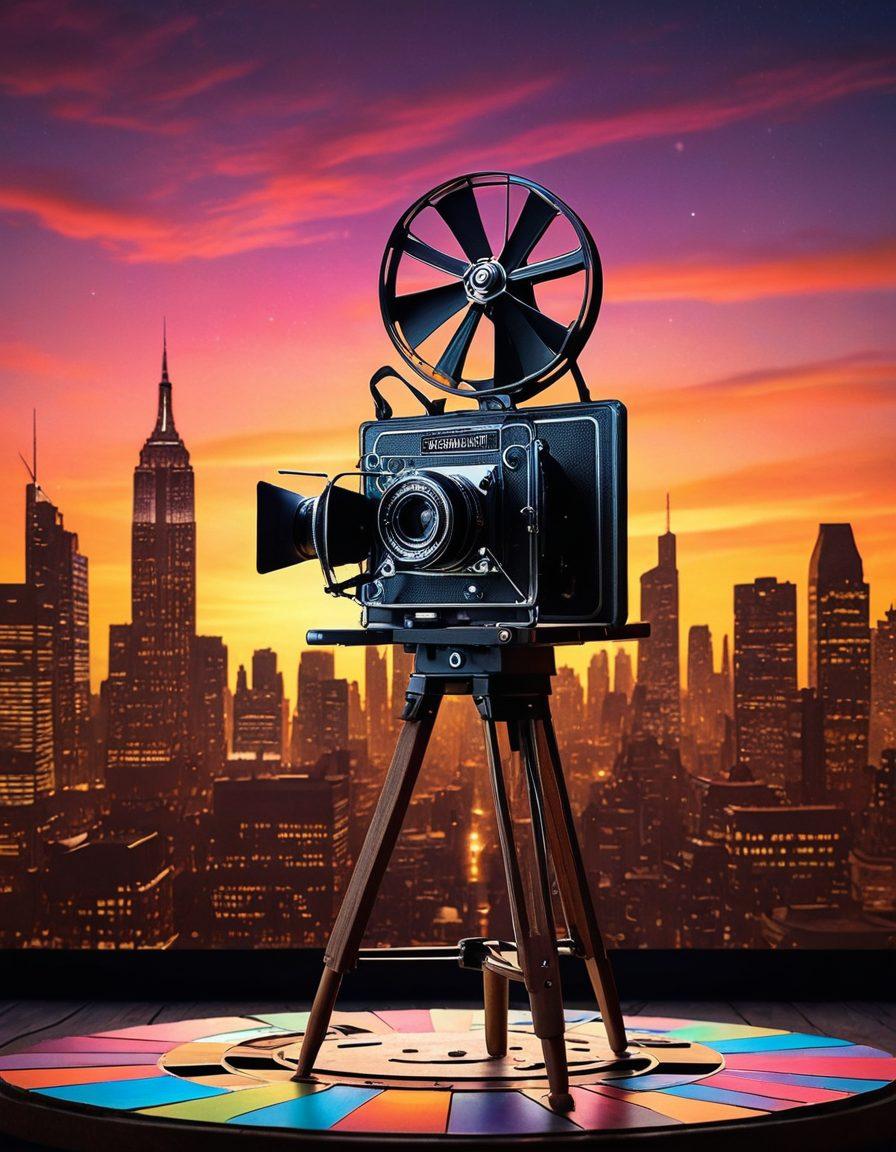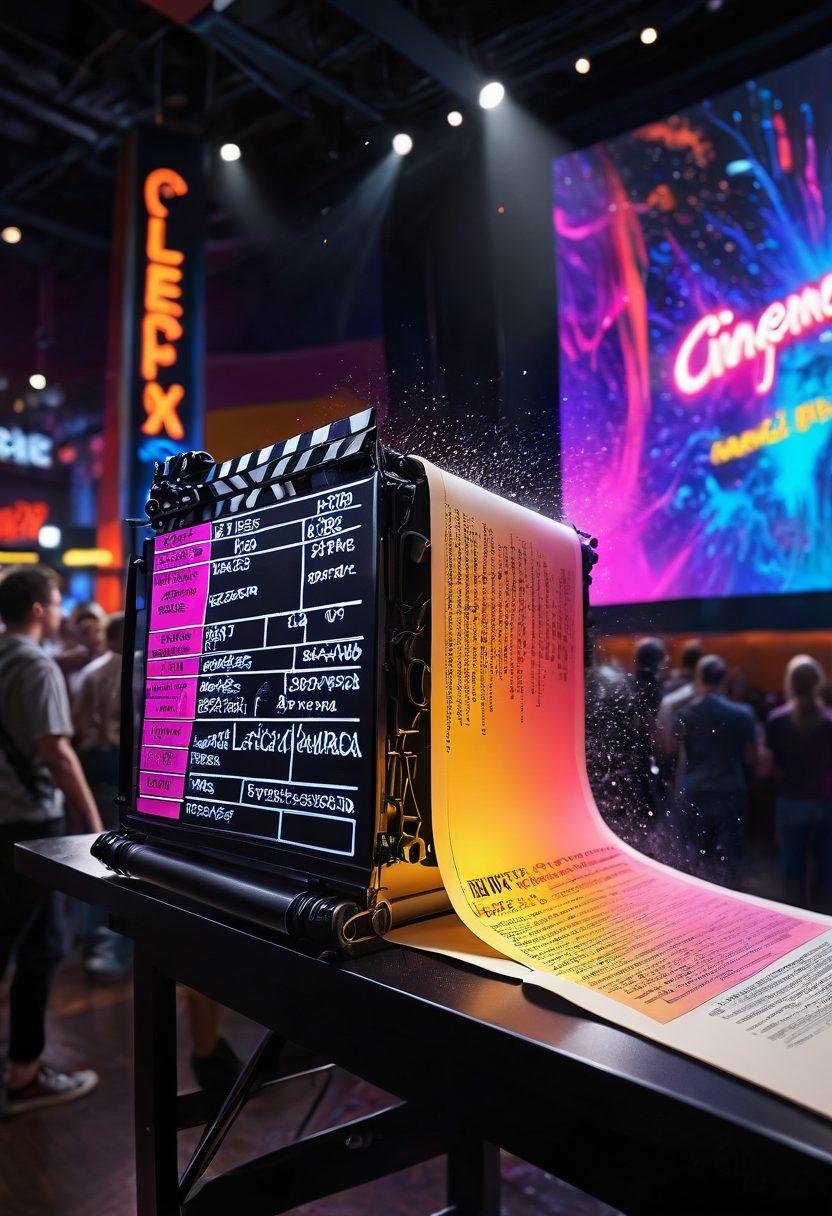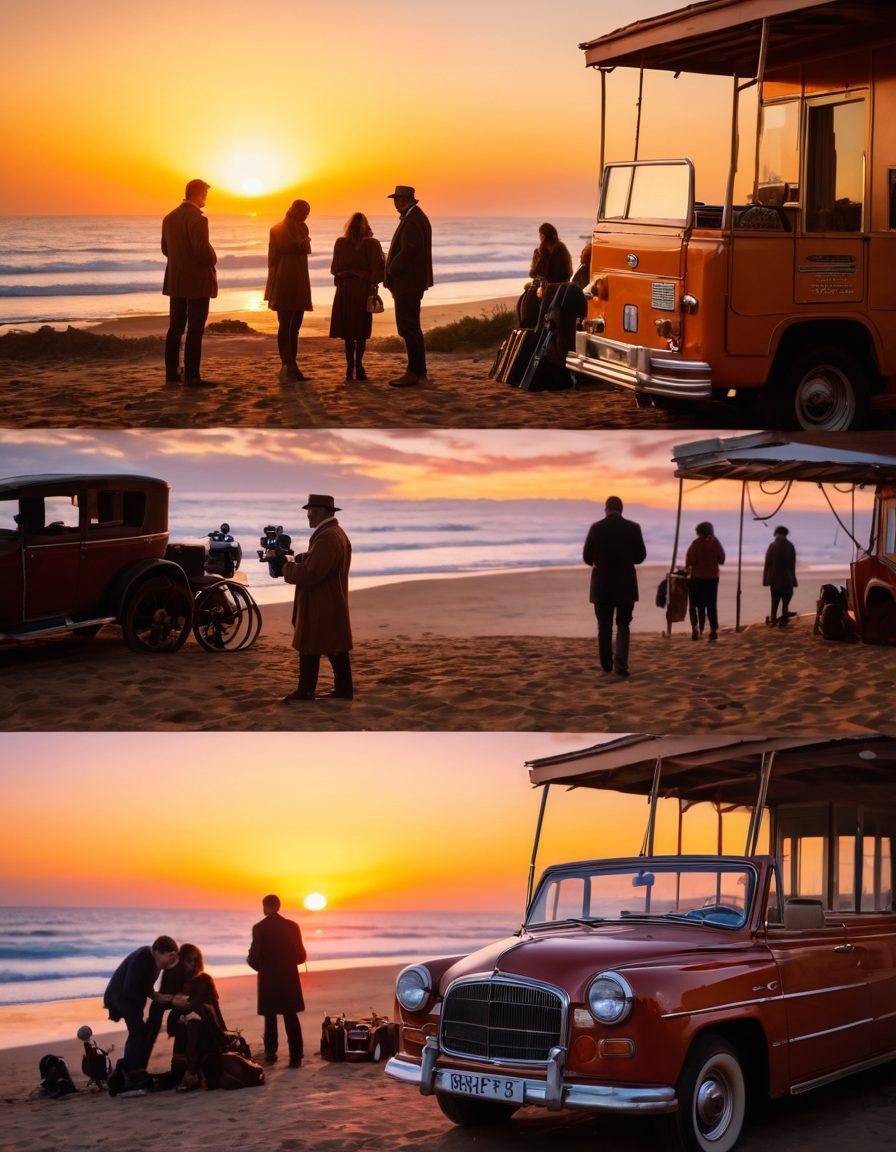Unlocking the Magic of Cinematography: A Deep Dive into the Art of Visual Storytelling
Have you ever watched a film and felt every emotion pour out of your being as the story unfolded before your eyes? That visceral connection is the magic of cinematography at work. In the cinematic arts, where every frame is an opportunity to evoke feelings and convey narratives, cinematographers play a crucial role in bringing stories to life on screen. From sweeping shots that capture the grandeur of a landscape to intimate close-ups that showcase a character's vulnerability, the techniques of cinematography are what elevate a simple story to levels of artistry that linger in our minds long after the credits roll.
Cinematography is not merely about pleasing visuals; it is the heartbeat of film making. Imagine a powerful documentary that captures the plight of an oppressed community. The choice of lighting, the movement of the camera, and the composition of each shot can make a world of difference in audience engagement. It can transform a documentary into a compelling narrative that garners attention, all the way from independent films showcased at film festivals to the latest blockbuster smashing box office records. As the legendary cinematographer Roger Deakins once said, "A cinema should be an experience; the medium is incredible, and it should inspire and provoke thought."
If we delve deeper into the techniques that give life to visual storytelling, the story of the illustrious motion picture industry unfolds. Techniques like production design, framing, and color grading can communicate themes and emotions without uttering a single word. For instance, in feature films, the stark choices between vibrant colors for joyful moments and muted tones for introspective scenes can speak volumes. Engaging audiences often boils down to these invisible cues that a cinematographer expertly maneuvers, encouraging viewers to feel rather than just observe. Have you ever wondered how a single scene can turn a movie trailer into a magnetic masterpiece that compels you to watch the entire film?
However, cinematography also extends beyond the realms of traditional filmmaking. Short films and animation rely heavily on these visual elements too. With limited time on screen, every shot must carry weight. The beauty of cinematography shines brightly in concise storytelling, allowing creators to paint a picture that resonates deeply in the audience's heart and mind. Documentaries, with their demand for authenticity, harness these same techniques, infusing them with a sense of realism that constructs a narrative steeped in the fabric of film history. You could almost say that within the frames of animated stories lies an entire universe waiting for viewers to explore!
As we traverse the corridors of film reviews and critiques, it becomes evident that the craftsmanship behind cinematography is often what earns films accolades and awards. The final touches of film editing and post-production polish the visual masterpiece that began with the script and ended up captivating audiences worldwide. Whether dissecting a cult film or analyzing a theatre performance, one thing remains clear: the artistry of cinematography is what transforms mere pixels into unforgettable cinematic experiences. So next time you sit down to enjoy a film, consider not just the story but the techniques that breathe life into it. How does each frame impact your experience? What stories are visuals telling you right before your eyes?
From Script to Screen: The Journey of Visual Expression
Cinematography is often described as the soul of film, a magical tapestry woven together through visual storytelling that stirs emotions and ignites imaginations. But what truly happens from the moment a script is born to when the film flickers to life on the silver screen? The journey of visual expression is as intricate and fascinating as the art of cinematography itself. It’s a world filled with creativity, collaboration, and countless decisions, each contributing to the cinematic arts that captivate audiences everywhere. Strap in, as we embark on a journey to unravel this cinematic experience!
Every film begins its life in the world of screenwriting, where the raw essence of a story takes shape. Writers sculpt characters, develop dialogue, and build narratives that form the foundation of feature films and shorts alike. But scripting is just the beginning—a mere blueprint for what is to come. As filmmakers delve into the modes of film making, they assemble their dream team: directors, cinematographers, production designers, and actors, who each play a pivotal role in translating the written word into visual poetry. As we consider the process, one must ask: How do these various elements come together to resonate with audiences?
Once the groundwork is laid, the magic of cinematography shines through. It is during filming that directors and cinematographers work in harmony, blending composition, lighting, and camera movements to create mesmerizing visuals. The choice of lens, angle, and shot type—these decisions have the power to evoke feelings of awe, tension, or even whimsy. From the neon-lit streets of blockbusters to the raw, intimate settings of independent films, cinematographers craft images that communicate emotions beyond what is written. But how do these visuals engage the audience and draw them into the story being told?
As the cameras stop rolling, the journey is far from over. The post-production stage is where the magic continues, as film editing shapes the narrative into a cohesive whole. With the careful trimming of scenes and the addition of sound and music, the film finds its rhythm. It is here that documentaries transform raw footage into compelling narratives, and animation bursts to life, allowing a creator's imagination to take flight. In a world with such diverse options for film distribution, from film festivals to online platforms, how do viewers decide what to watch when a plethora of movie trailers tantalize them?
Finally, the culmination of this artistic journey arrives with the film’s release. Awards, film reviews, and audience engagement shape its fate in the motion picture industry. Critical critiques can elevate a small independent film to cult film status, while box office giants dominate the conversation with their blockbusters. And as viewers engage with the story on screen, they become part of the cinematic history that transcends generations. So, the next time you sit down to watch a movie—whether it’s a short or a feature film—remember the intricate journey it took from script to screen, and appreciate the craftsmanship behind visual storytelling. In that moment, let yourself be transported into a world where every frame is a piece of art.
Cinematography Unveiled: Crafting Emotions Through Imagery
Cinematography is the heartbeat of every film, the invisible artist that shapes how we experience a story. Think about your favorite cinematic arts—those moments that left you gasping, laughing, or perhaps shedding a tear. Have you ever wondered what lies behind the captivating visuals that pull us into the narrative? In this exploration of cinematography unveiled, we dive deeper into how imagery crafts emotions and connects us to the characters we love (or love to hate). This journey through light, shadow, and movement ultimately leads us to a profound understanding of visual storytelling, bridging the gap between the art and the audience.
The magic of cinematography begins before the cameras even start rolling. It's found in the meticulous planning and production design of feature films and independent films alike. Directors, cinematographers, and production teams work together closely during pre-production, mapping the visual style and aesthetic of the film. Whether it’s crafting a sweeping aerial shot for a blockbuster or an intimate close-up in a short film, every frame serves a purpose. How does a single shot impact your emotional response? Well, think about the last documentary you watched or the latest animation that captured your imagination. Each frame is a piece of the puzzle, expertly placed by the filmmaker to elicit feelings, provoke thoughts, and spark engagement.
Lights, camera, action! But what happens in post-production? Film editing breathes life into raw footage, where cinematography meets the art of storytelling through pacing and rhythm. The journey doesn't end with the final cut, however. The film distribution process is vital, helping to showcase films at festivals and ensuring audiences can discover hidden gems or cult films. Enthusiastic film reviews and critiques can propel independent films into the limelight, encouraging deep discussions about the art of screenwriting and directing. Curating a cinematic experience is about more than just visuals; it’s about immersion and connection and carries through every aspect of film making.
As the audience watches, they become part of a dynamic relationship that transcends the screen. Can you recall a moment when a movie trailer ignited a sense of anticipation before a film's release? That’s the power of skilled cinematography. It doesn’t only sell a film; it captures and teases the essence of the story, creating an emotional bond even before the screening begins. In the motion picture industry, this is truly vital because it’s not just about box office sales; it’s about creating an experience for viewers that stays with them long after the credits roll. How can we apply these insights to our own lives? Just as cinematographers craft their shots, we can frame our narratives in a way that evokes emotion and connection.
Cinematography stands as a testament to the art of visual storytelling, reminding us that every image has a voice. From the grand theatres to intimate screenings of independent films, the cinematic arts invite us to reflect on our shared human experiences. Just take a moment and think about your most impactful cinematic memory. Was it the haunting atmosphere of a haunting documentary or the laugh-out-loud moments from a comedy? The beauty lies within every flicker of light and shadow, where emotions are not just conveyed, but felt. So, what will your next creative endeavor be? Whether it’s in independent productions or future feature films, embrace the art of imagery to tell your story with heart and authenticity.


